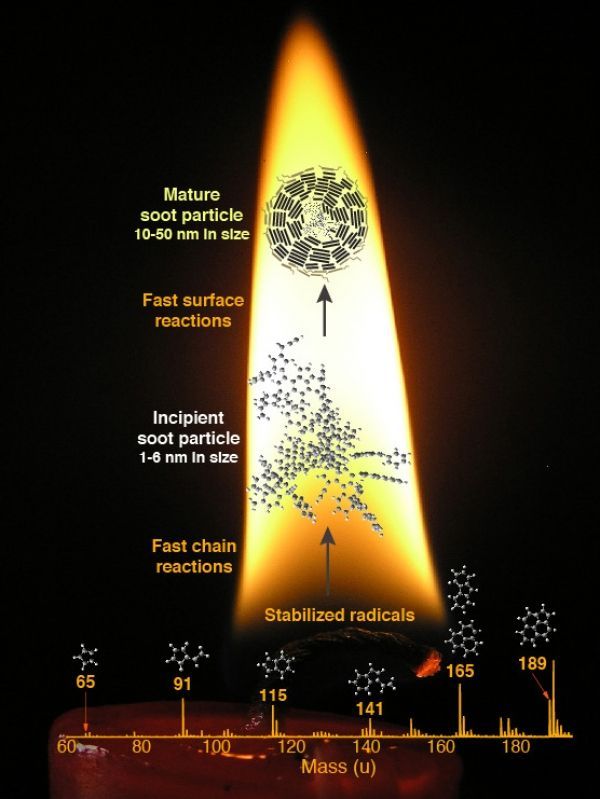The longstanding mystery of soot formation, which combustion scientists have been trying to explain for decades, appears to be finally solved, thanks to research led by Sandia National Laboratories.
Soot is ubiquitous and has large detrimental effects on human health, agriculture, energy-consumption efficiency, climate and air quality. Responsible for significantly increased rates of cardiovascular and pulmonary diseases and associated deaths, soot also contributes to millions of deaths worldwide annually, largely from indoor cooking and heating in developing nations. It leads to tens of thousands of deaths in the U.S. every year, predominantly from human caused, or anthropogenic, emissions to the atmosphere. In the atmosphere, emissions of soot are known as black carbon.
“By understanding soot formation, we have a better chance of being able to reduce its dangerous emissions from engines, forest fires and cook stoves and control its production and characteristics during industrial processes,” said Sandia researcher Hope Michelsen, adding that everyone knows what soot is, but nobody has been able to explain how gaseous fuel molecules become soot particles.
Read more at Sandia National Laboratories
Image: Sandia National Laboratories scientists have discovered a mechanism for soot formation, solving a longstanding scientific mystery. In this image of a candle flame, the colors are from hot soot luminescence. The mass spectrum at the bottom shows the peaks for the radicals that drive reaction. The incipient soot particle shown between the two arrows is the cluster that marks a transition to the condensed phase. Fast reactions grow the particle shown at the top of the flame. (nm = nanometer = 10-9 meters). CREDIT: Hope Michelsen


